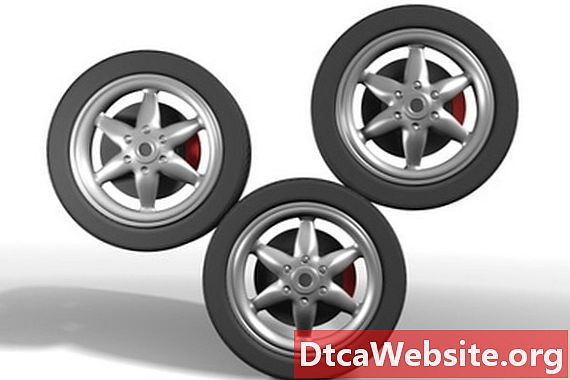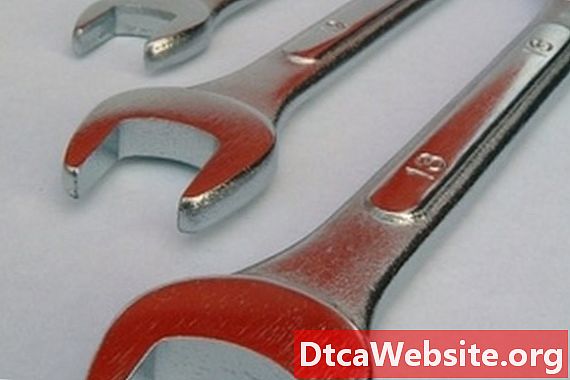
Contenu

The size of a vehicles tires affects many aspects of its performance and operation; these changes are small, but they are important nonetheless. From speed and fuel efficiency to ride quality and transmission shifting, tires of varying sizes possess varying advantages and disadvantages.
Speed
Tire width has no effect on vehicle speed, but tire height does. Simple math dictates this fact; in order to cover the same amount of ground, a small tire must rotate more times than a larger tire. Because of this, the taller the tire, the faster it propels the vehicle, even as the vehicles engine produces the same number of rotations per minute (RPM). However, larger tires reduce acceleration as they increase overall vehicle mass, thus increasing the vehicles inertia (its tendency to stay at rest once it has stopped).
Efficiency
Because they cover more ground without the need to increase an engines RPM, taller tires make for more miles per gallon on the highway. When traveling in town, however, smaller tires provide better fuel efficiency as they offer better acceleration (much of the fuel consumed by an engine is due to acceleration; it requires a great exertion of energy to propel a cars mass, and a great exertion of energy requires fuel to power it).
Clearance
Taller tires raise a vehicle higher off the ground, preventing cars from bottoming out on sloping streets. The taller the vehicle, the greater the drivers vantage point; the driver of a vehicle with taller tiles sits in an elevated position with a better view of surrounding traffic, dangerous obstacles and road conditions.
Handling and Traction
Smaller tires create improved handling, as their sidewalls are less flexible and their small mass is more aerodynamic. Meanwhile, wider tires with a greater diameter make for a smoother ride as they are more flexible and absorb more impact. Because of this impact-absorbing quality, rough terrain and small bumps become less noticeable and the vehicles ride comfort increases.
Gauges
Changing a vehicles tire size affects its speedometer and odometer displays, as these gauges calculate speed and distance based on the vehicles RPM coupled with its original tire size. When equipped with tires taller than its standard tires, a vehicles speedometer displays a lower-than-actual speed and its odometer shows less distance than has actually been traveled. Changing tire size affects transmission shift points, as they are set up for a vehicles original tire size. These disparities must be corrected with a different gear appropriate to the vehicles current tire size,
Aesthetics
Drivers commonly change a vehicles tire size simply to modify the vehicles aesthetics. Some tires, especially larger tires, are considered decorative. Using large, low-profile tires or installing larger rear tires is viewed as stylish; many sports cars make use of these aesthetics.


